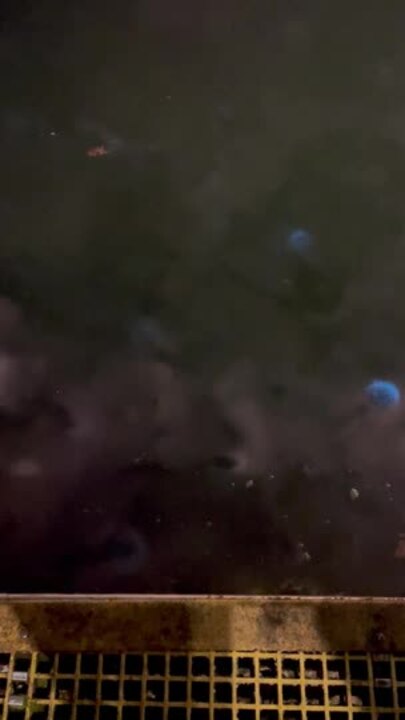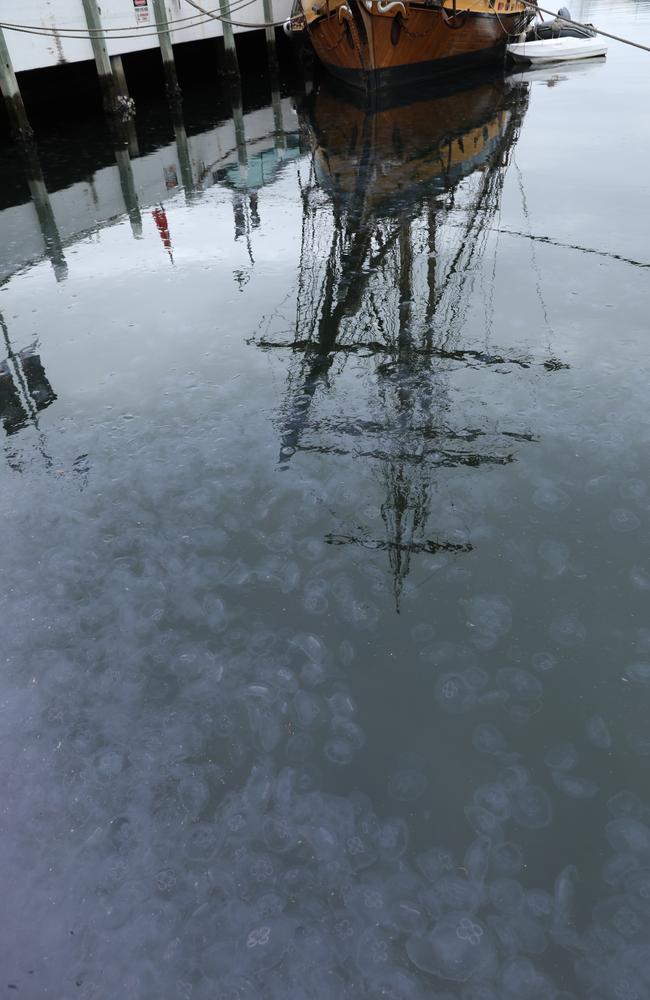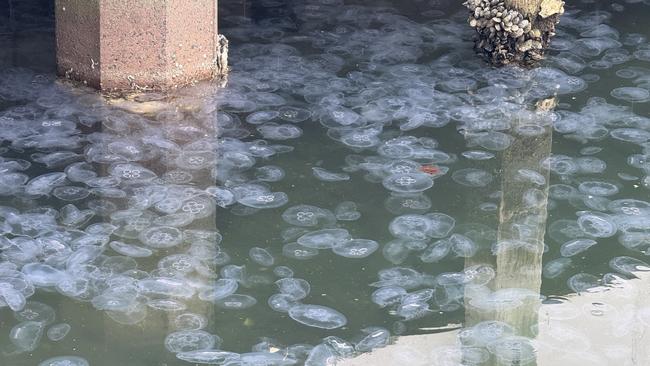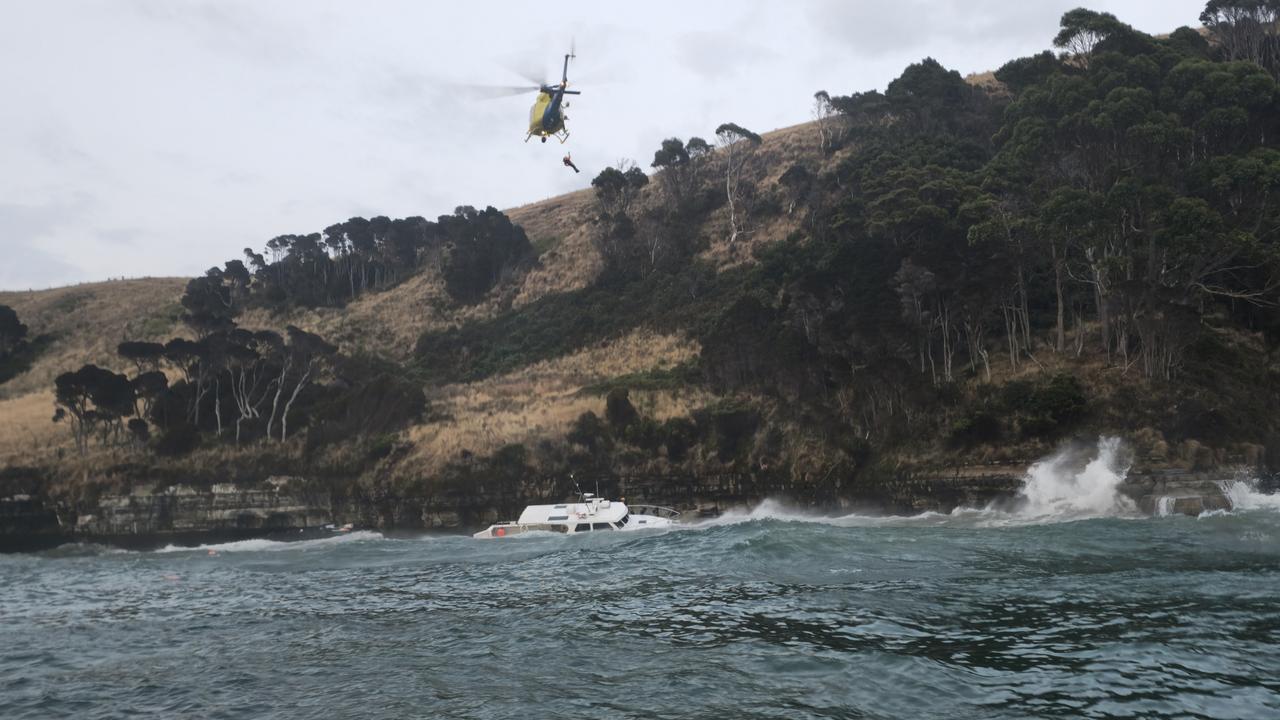Jellyfish bloom at Hobart’s waterfront a ‘once-in-a-lifetime’ chance to witness nature’s magic
An unprecedented amount of jellies are congregating on Hobart’s waterfront. While one expert says it will be a ‘once-in-a-lifetime’ opportunity, the situation is a worrying signal. WATCH HERE >>

Tasmania
Don't miss out on the headlines from Tasmania. Followed categories will be added to My News.
A “phenomenal” amount of moon jellyfish have popped up on the Hobart waterfront in what one expert warns could be the last “gasp” of an ecosystem on the brink of collapse.
Local Tasmanian biologist and expert on marine ecosystems Lisa Gershwin said witnessing the moon jellyfish combined with a bloom of bioluminescent algae, noctiluca scintillans, would be a once-in-a-lifetime opportunity to witness something magical.
Dr Gershwin said the jellyfish agitating the algae will be a “magical” and “exquisite” spectacle.
She also said it could be a worrying sign of things to come and a signal that the ecosystem has “collapsed” or is in “free-fall”.
The mild-mannered Aurelia or moon jellyfish are congregating in “gobsmacking” numbers at the Brooke Street Pier, interacting with the bioluminescent algae.

Dr Gershwin said the jelly is a major threat to salmon farms as the jellies are passive drifters, and get caught up in the salmon’s own current in the pens.
Once caught, the jellies panic and release a stinging mucus, which then panics the salmon who start breeding faster. The mucus can prevent the transfer of oxygen from the surface, suffocating the salmon.
Dr Gershwin said the jellyfish bloom follows a cycle where we have first seen unprecedented levels of jellyfish like creatures called salps, then a bloom of “beauty and beast” bioluminescent algae and now the moon jelly bloom.
“Each are visible indicators that something is out of balance in the water and are also drivers of more damage,” Dr Gershwin said.

Dr Gershwin said without collaboration between organisations dedicated to researching and tackling these indicators it was impossible to determine where in the cycle of the ecosystem “collapse” we were.
“I can’t actually tell you if we are looking at the collapse or if we are in the collapse or looking back,” Dr Gershwin said.
She said stakeholders should be collaborating to study and protect the Storm Bay ecosystem which is vitally important to many industries.
More Coverage
Originally published as Jellyfish bloom at Hobart’s waterfront a ‘once-in-a-lifetime’ chance to witness nature’s magic





